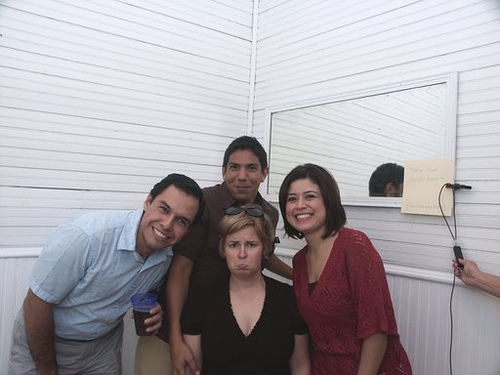Recently a reader commented with this useful question: “How do I find people who can support me in reaching my goals, whether by encouragement, having the same/similar goal or even a goal of their own? Are there any tips you can offer regarding how to tell people that I’d like to work on a goal?” In this article, I’ll talk about how other people can fit into your plans for achieving your goals. In the follow-up, I’ll talk about specific ways you can find supporters and partners.
First, it’s worth mentioning some of the benefits of support and buddying up:
- More resources for information and help
- More reminders of what you’re doing and why it’s important
- People to cheer you on and help boost your mood
- An “audience,” people to witness your progress, making you less likely to just silently let your goal slip (although if you get very anxious about other people’s opinions, this may not be a good option for you)
- Sometimes, models to emulate
- Sometimes, companions to do things with
- Opportunities to maintain a feedback loop, to make it easy to reflect on how you’ve been doing and how you could tweak your approach for the better
- Increased social time in general, which even if it has nothing to do with your goal tends to improve mood (see “Want to Reduce Stress? Increase Social Time“).
People can help you in a variety of roles:
- mentors are skilled at doing whatever you’re trying to take on and can provide specific help and guidance. A mentor could be a friend or family member who has already done what you’re trying to do, a specialist like a personal trainer or professional organizer, a therapist, a coach, a teacher, etc.
- partners want to achieve the same goal you do and can get together with you to work on it. My belief, although I don’t know of any research to back this up, is that partners who are at about the same place you’re in work best, since you two are likely to face similar challenges, and you’ll neither be discouraged by the other person being far ahead of you or impatient at the person being far behind.
- groups get together on a regular basis to share ideas, witness each other’s progress (or sometimes lack of progress, because occasional failures and setbacks are a normal part of pursuing a goal), offer encouragement, and otherwise help keep each other on track. Online groups generally offer discussion and support without meetings, which adds flexibility but takes away the structure of a regularly scheduled check-in.
- role models can be people you know or people you’ve only heard of, and have achieved what you want to achieve. Role models offer the opportunity to learn how to successfully reach a goal and a clear reminder that it can be done.
- supporters include anyone who can make a constructive contribution to your progress by helping to provide information, encouragement, or discussion.
- competitors are other people trying to reach the same kind of goal as you who inspire you to work harder. Some of us respond well to competition and some don’t. If you’re someone who does, then trying to be the most successful person in your weight loss group or to get an agent before any of your other writer friends can be a good way to stay motivated.
There’s also one group to avoid: detractors. This includes anyone who will get in the way of you achieving your goal, whether or not they mean well. Anyone who encourages or excuses your bad habits, distracts you with things that prevent you from making progress, or actively tries to disrupt you through badmouthing, scoffing, unkind comparisons, or other tactics is worth avoiding if possible, keeping out of the loop if it’s not possible to avoid them, or ignoring if it’s not possible to keep them out of the loop.
Photo by Wootang01












